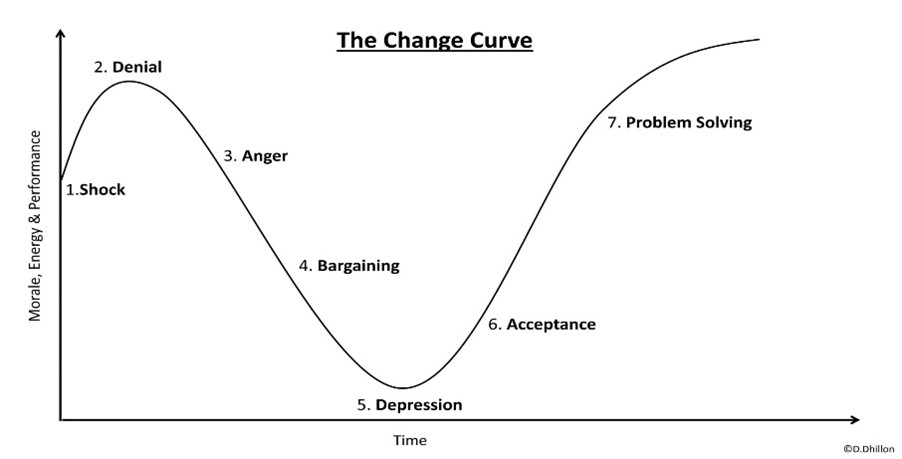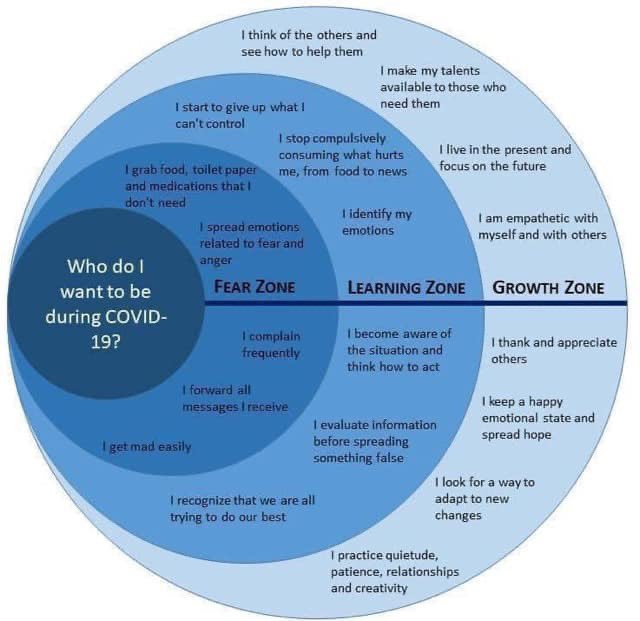Are you feeling digitally done in? You’re not alone.
Founder and Director of The Mainly Mental Health Company, Jane Cattermole, explains what Digital Burnout is and why we should be addressing it urgently.
I get asked all the time, ‘So is all this going to change how our brains function?’ The answer in the long term is NO – as a species, it takes millennia for our actual brains to change structure – which is why we still respond to broken photocopiers as if they’re sabre tooth tigers.
However, circumstances CAN change our neurochemistry on an individual basis and a dramatic increase in use of smartphones, laptops, desktops and TVs – and changes in the way we use this technology is creating a new phenomenon called Digital Burnout. But first, let’s understand how the last 12 months or so is likely to be impacting on our brains.
First of all, trauma. When we talk about trauma from a psychological perspective, we mean an event or events which are experienced as life threatening or potentially life threatening – but these can also include bereavement, abuse, illness or threat of any of those things. Over the last year or so, talk of the risk of death and dying has been constant. Drastic ‘emergency’ measures have been put in place to protect life. In other words, what has always been an esoteric threat for us on some level, suddenly became VERY real. Although we’ve all experienced (and continue to experience) threat of illness and potential death, for some, the risk is closer. We don’t have to be experiencing serious illnesses such as PTSD to be affected by the impact of a crisis such as this. If our brains are in trauma, it will affect 2 things – the amygdala (which controls fight & flight, the nervous system and the storing of emotional / threat related memories) will be hyperactive and the prefrontal cortex (which controls attention, awareness, decision making especially in terms of how we respond, emotional regulating and inhibiting dysfunctional reactions), will be less active.
Most of us won’t experience the crisis as trauma but may well experience some general brain confusion relating to being in crisis, how we respond to significant and non-voluntary change, juggling a different and unexpected set of stressors and something therapists are now calling ‘Digital Burnout’. The change in the way we communicate together in groups has happened quickly and has created a Strange Situation for our brains to navigate and adapt to. For example, the way we pick up ‘gaze’ or different expressions subconsciously and consciously in others consumes more energy than it would do normally simply because we’re not used to doing this as much as we are now. We’re also not used to looking at ourselves so much – there’s a reason we don’t normally have offices full of mirrors! This means that our brain is, to some degree, checking our reactions and appearance and making judgements on these at the same time as doing that with the other people we’re seeing.
There is something fundamentally threatening about seeing someone’s face extremely close to ours! The term ‘unnatural frontality’ describes being close up to an image of someone’s face. This level of intimacy usually only happens in acts of threat or love and is a visual trigger for attachment systems making us vulnerable and cognitively impaired.
All this combined means that communicating this way can be very tiring – I certainly find that I’m more tired after a 4-hour online training session than I ever was after a full day in the classroom – and we find we are getting ‘brain tired’. Early indicators suggest that this might cause sleep problems, affect how we are interpreting information and how we’re regulating emotions and feeling physically.
So, managing our behaviours around video conferencing and ensuring we are attending to environment and self-care are proving critical in these times. During this ‘general brain confusion’ stage, we may produce more or less of hormones and neurotransmitters such as dopamine, serotonin, cortisol, adrenaline and noradrenaline, causing increased anxiety and decreased mood, perhaps for some to the point of clinical diagnosis.
HOWEVER, there is HOPE and GOOD NEWS too!
Our brains are incredibly robust and invested in our survival – therefore, they adapt and flex to situations, often very quickly. This is called Neuroplasticity.
As part of a current, ongoing study into the Psychological and Social impact of the pandemic, the University College of London surveyed 74000 people and found that after an initial decline in happiness and wellbeing immediately prior to lockdown, there were then reports of a decline in anxiety levels and an increase in wellbeing both for people without and with anxiety disorders. To quote one person with lived experience of anxiety “the terrible thing has happened, so in a lot of ways, you’re not in the anticipation state anymore’. The other question this is raising in many workplaces is ‘Was it actually normal life that has been making us ill, after all?’
Change is a complex science, so this is the best way I have found of summarising the impact.
Some of you may be aware of Elizabeth Kubler Ross’s cycle of grief, which she adapted to indicate our reactions to change.

Change has an impact on us all, even when we choose it. Think about when we move house, change jobs or end relationships. However, Enforced Change can affect us more, especially when this leads to a chain of enforced changes as in the current crisis – affecting our social lives, work lives, home lives etc and where we may feel that we have little control over this.
So, we can have a look at this curve and consider where we are right now, where we’ve been and where others might be – because we do not travel it together. Each stage affects our brain functioning and our brain functioning can affect how we move through the stages. For example, people more prone to negative thoughts, pessimism and depression may struggle longer at stage 5 or return to it more regularly. Whereas for those with good resilience, whether naturally occurring or learned, this is reflected in a more rapid movement to stages 6 & 7, acceptance and problem solving.Our journey through the change curve can happen in moments or years depending on the person’s psychological make up and life experience.
The change curve has links to Tom Senniger’s Learning Zone Model – here adapted to the current situation with Covid-19.

If you have a look at this, you can see that when we’re in stages 1-5 of the change curve, we’re more likely to be in stage 1 of the learning zone – a place where we respond in fear and confusion, often lashing out or withdrawing inwards. Without awareness, it’s not until the later stages of acceptance and problem solving that we start learning, evaluating, accepting restrictions and recognising opportunities and starting to support and help others and feel happier. With awareness, we can predict, accept and move more quickly through the stages to being happier and more productive.
The laws of neuroplasticity say that we can take action to encourage our brain’s health, get ourselves into the growth zone and maintain this.
We can do this by being self-aware, understanding how our brains work and respond, and by engaging in pro-active strategies, including thinking about where we are in this Learning Zone and where we want to be.
Understanding this can also help us be more tolerant and mindful of those who may move through the process in a different way to us.
So, what to do:
1. Ask yourself – do you HAVE to spend so much time on screen? Will a phone call do? Reduce where you can.
2. Set yourself up to make people feel comfortable – a bit of space around you rather than a close up of your face – lovely as it may be!
3. Turn off your self-view (if you have the option). I promise, it’s a game changer – you can feel the relief immediately. If you can’t do this, consider how you can engage without looking at the screen all the time. If you can have your camera turned off for some meetings, all the better.
4. Try sitting at an angle to the screen, as you would if you were sitting with someone. You wouldn’t sit directly opposite the person you’re talking to as it would be considered confrontational.
5. Trees, nature, fresh air. Yes, yes, we all know this but, actually, it is now critical. These environments trigger the release of chemicals which help us combat the impact of digital burn out. Go hug a tree!
6. Become an expert in you. Get to know your reactions and responses to stress and learn how to recognise when you need to take action to avoid digital burn out.
7. If you’re a People Manager, think about how your behaviour is impacting your people. Exemplify stress and digital time management – encourage and enable your people to do the same. Get to know your internal support options and talk about them often so that staff know, not just where to go for help, but that they are safe to do so without judgement or penalty.
If you’re interested in our training for you or your team, get in touch. Knowledge is Power!




